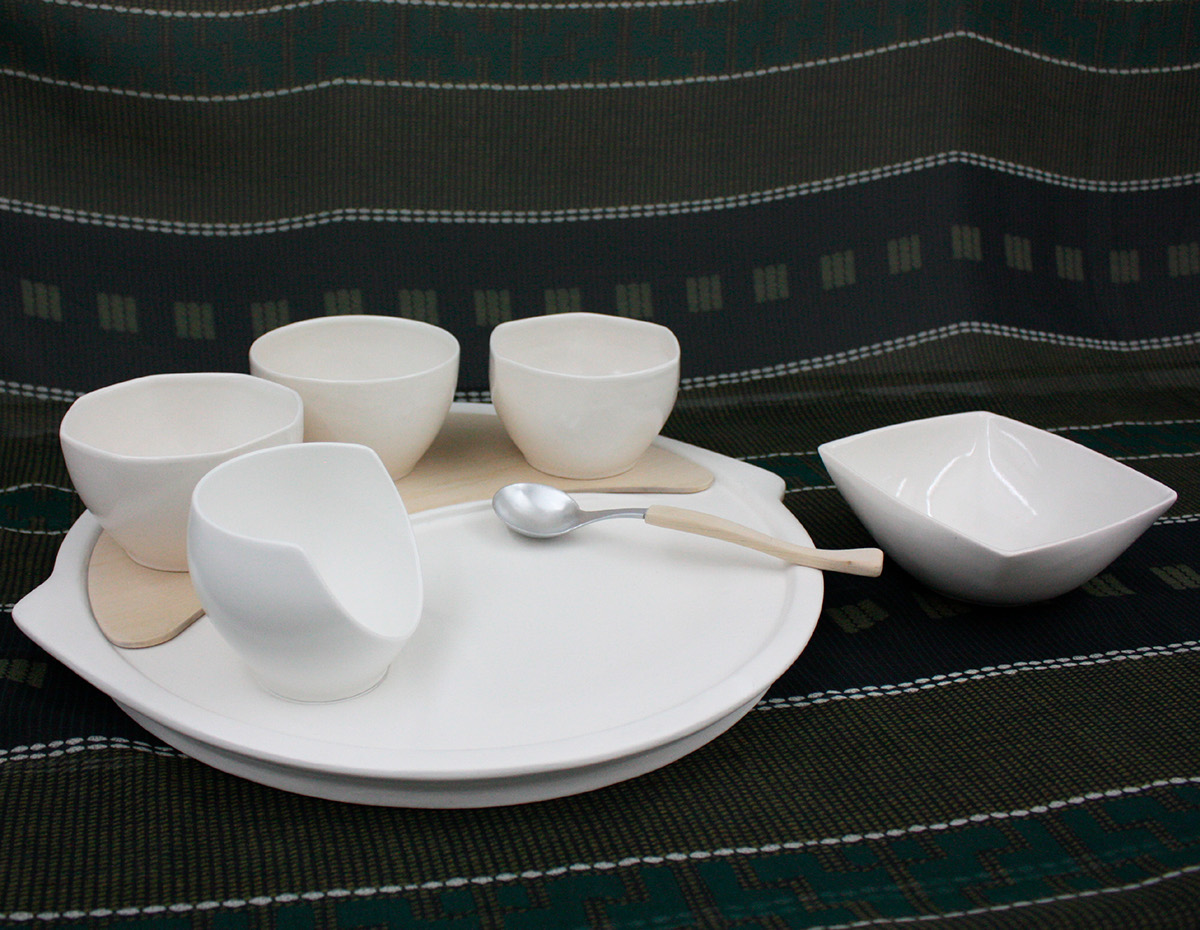
Project Description
The goal was to create a tableware set for a new restaurant opening in Manhattan , serving food from a different country. I choose to design a Balinese inspired restaurant that would serve authentic Balinese Cuisine.
With a population of 4.22 million, the island is home to most of Indonesia's Hindu minority. According to the 2010 Census, 84.5% of Bali's population adhered to Balinese Hinduism, 12% to Islam, and most of the remainder followed Christianity. Bali is also the largest tourist destination in the country and is renowned for its highly developed arts, including traditional and modern dance, sculpture, painting, leather, metalworking, and music.

Balinese Cuisine
Balinese cuisine demonstrates indigenous traditions, as well as influences from other Indonesian regional cuisine, Chinese and Indian. The island's inhabitants are predominantly Hindu and culinary traditions are somewhat distinct with the rest of Indonesia, with festivals and religious celebrations including many special foods prepared as the offerings for the deities, as well as other dishes consumed communally during the celebrations.
It is one of the most complex cuisines in the world. Using an incredible variety of spices, blended with the freshest vegetables, meat and fish.
The staple food on Bali is rice, and it would be difficult to imaging that a Balinese person could go a day without these pearly white grains. Balinese have been cultivating rice for thousands of years, and although many farmers now grow a new high yield rice, most Balinese people still prefer the taste of good natural rice.
Red rice, sticky rice and black rice is also cultivated, the later for a sweet black rice pudding. Rice is usually served with a variety of side dishes, including vegetables, fish or meat and the legendary Sambal, a potently spicy chili paste, however just like most of Hindus, beef is never or rarely consumed.
Freshness is very important to Balinese culture and cuisine, and most cooks buy their ingredients each morning at any of the local marketplaces. Vegetarians will have no problem in Bali, as the people use a wide variety of vegetables, tofu and soybean in their daily cuisine.
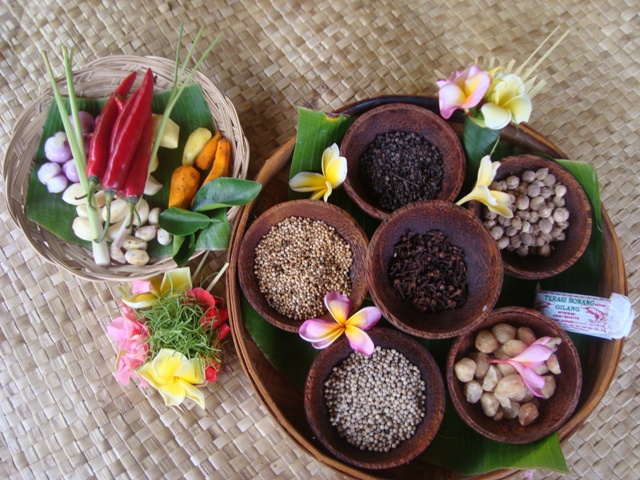
About the Restaurant
BASA is a Balinese cuisine restaurant located in The Meatpacking District, on Little W 12th street, with a view of the Highline at the end of the street. The restaurant is on the ground floor of a three story building. On the exterior there are 2 stone carved guardian sculptures marking the entrance on one of the ends, the rest of the façade are glass doors from ceiling to floor that in the warmer seasons slide to the side to open up the space and eliminate the barrier to the outside where a diversity of plants create a great view.
Once you enter there’s someone to greet you and to direct you to your table. The floor of the restaurant is rectangular and long, on the sides against the walls there’s a small platform on top of which rectangular simple wooden tables are placed low to the ground, before you sit on your table you have to take your shoes off and step on the platform; surrounding the table are printed soft cushions to sit on. The tables are separated by low wooden dividers. These tables are for large parties, in between the platforms smaller round tables are placed for smaller parties, they are also low to the ground with cushions to sit on.
The atmosphere is cozy and comfortable, the color palette is very earthy and there’s use of natural materials in the design of the furniture, the table dividers are carved with Balinese religious motifs and the walls have colorful paintings of nature. Each table has their own lighting coming from the ceiling which is bright enough to let you read the menu but not bright enough to lose the coziness feeling.
Once you’re at your table you have the choice of having the sampler experience or choosing from the menu. With the samplers you don’t have to worry about what to order, small bowls are bought to you with small portions of the plates in the menu; every meal is accompanied with white rice and silverware is given to you but the use of them is optional.

Design of Pieces
For the design of the pieces I choose the Nasi Bali plate which is served with a variaty of different dishes. It is a sampler platter that could be for a group of people or for only one person. I wanted to create a cohisive way of serving this dish and to have it served all at once. I focused on the personal meal.
Nasi Bali
Nasi campur, refers to a dish of rice topped with various meats, vegetables, peanuts, eggs and fried-shrimp krupuk. Depending on which areas it originate, a nasi campur vendor can several different side dishes, including vegetables, fish and meats. It is a staple meal of the Southeast Asian countries, and popular especially in Indonesia, Malaysia, Singapore and the Netherlands.
In Bali the mixed rice is called Nasi campur Bali or simply Nasi Bali. The tastes are often distinctly local, punctuated by basa genep, the typical Balinese spice mix used as the base for many curry and vegetable dishes. The Balinese version of mixed rice may have grilled tuna, fried tofu, cucumber, spinach, tempe, beef cubes, vegetable curry, corn, chili sauce on the bed of rice. Mixed rice is often sold by street vendors, wrapped in a banana leaf.
Pieces To Design
- Tray
- Rice Bowl
- Side Dish Bowls (3)
- Soup Bowl
- Serving Spoon

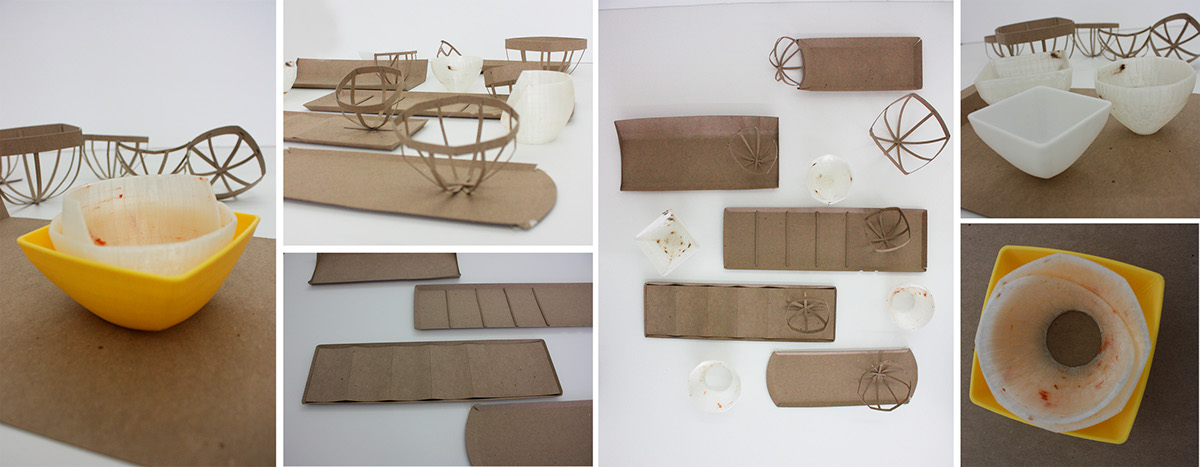

Finished Pieces
Tray

Rice Bowl

Side Dish Bowls

Spoon and Soup Bowl
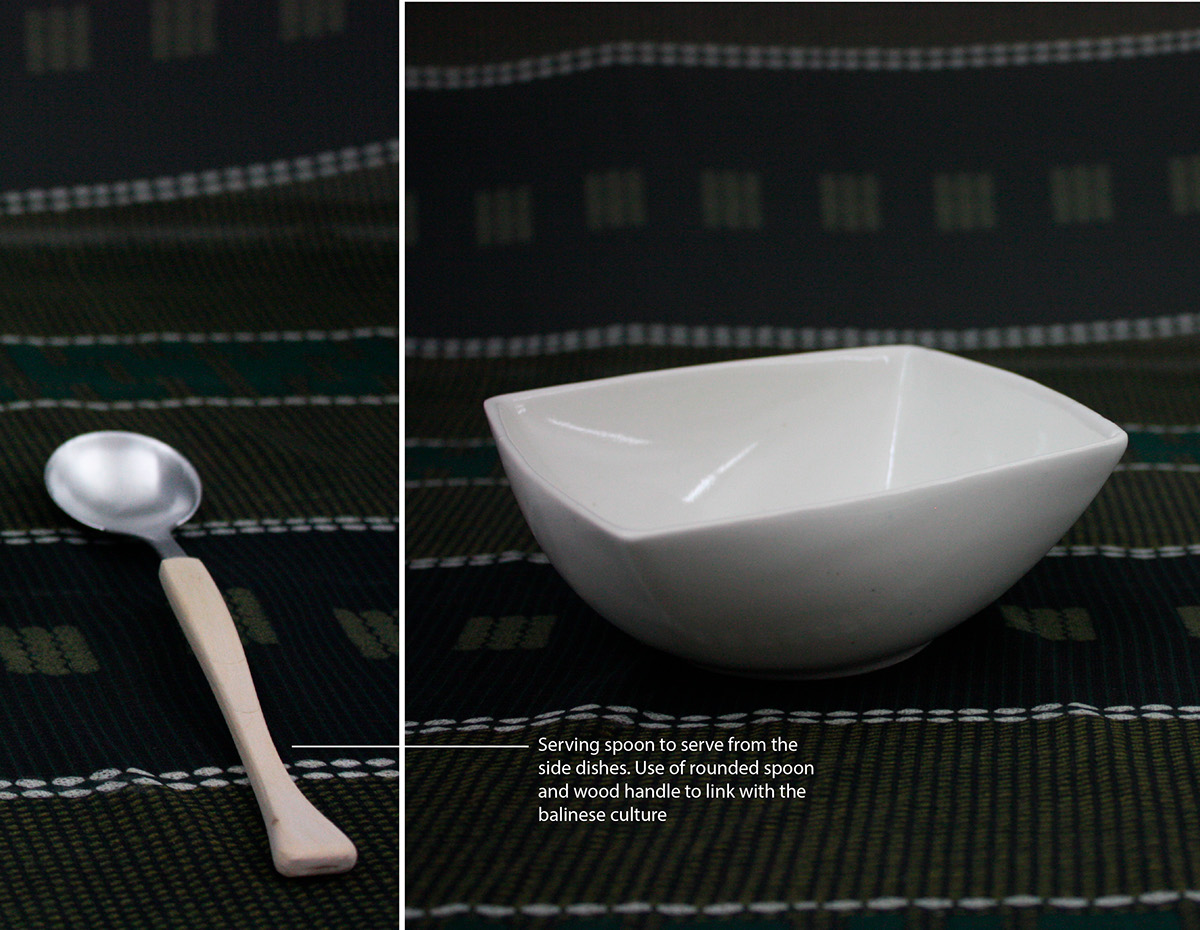
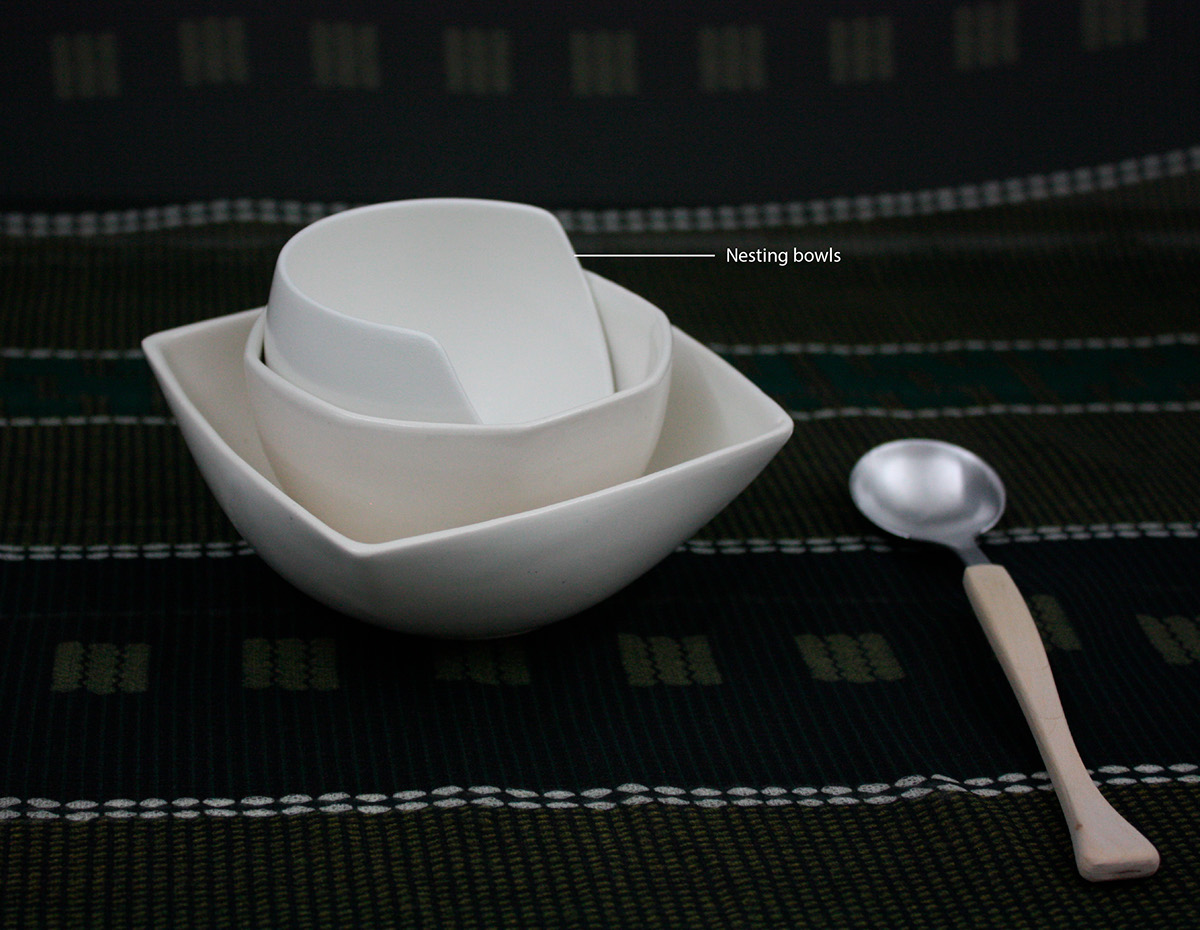
Tableware Set
Nasi Bali
